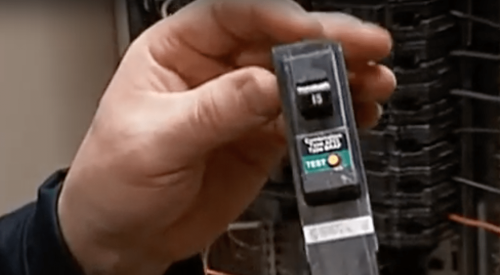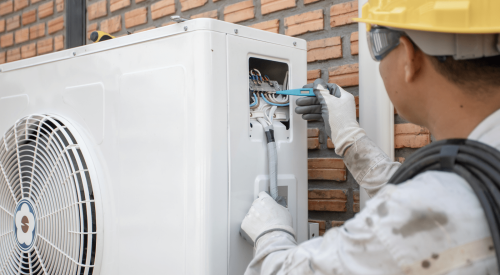|
There are few things more devastating to a homeowner than a fire.
 |
But there are steps builders can take to prevent electrical fires, which lead to an estimated 485 deaths and 2,300 injuries annually, according to the USFA. That includes using arc-fault circuit interrupters (AFCIs), which the U.S. Department of Housing and Urban Development listed as one of the many devices that can be used to prevent residential electrical fires.
Whereas conventional circuit breakers only respond to overloads and short circuits, they don't prevent arcing conditions that produce an erratic current flow. According to the National Electrical Manufacturers Association, arcs naturally occur in the operation of electrical devices such as motors and switches. An arc fault occurs when wiring insulation damages the arc. These can produce extreme heat and lead to fires.
 |
According to NEMA, the 2008 National Electrical Code is expanding requirements for AFCIs. NEMA estimates AFCI protection in circuit breakers could prevent 50 percent or more of the fires caused by problems in the electrical system. The 2008 edition of the code also takes safety a step further by requiring that all new home construction builders install combination AFCIs to all 15-amp and 20-amp branch circuits not only in bedrooms, but in additional living areas in new dwellings and in the lighting system.
It is important to note that AFCIs are not a panacea; it is possible for a high-voltage surge to damage the arc-detecting circuits of an AFCI. "This is a very rare occurrence, and in this case, the device may still function as a circuit breaker. The test button on the AFCI will confirm whether the arc detecting circuitry is still functioning," says Winstanley. "We recommend that the operation of all AFCIs is checked on a monthly basis."
AFCIs may also be tripped inadvertently, though this too is rare. According to NEMA, the majority of the "nuisance trip" issues are related to installation problems. Specific examples include
 |
"AFCIs are a relatively new technology and manufacturers are investing great effort in their development. It is very likely we will see further developments in these products. The key issue is safety. There are many home safety options, but AFCIs are a technological leap forward that provides immediate preventative protection to the home's electrical system," says Winstanley.
He believes the expanded NEC requirement will have a significant impact on home safety and decrease the number of lives lost and injuries that occur in residential fires. "Homeowners deserve the safest home possible. This is especially important with new home construction, where safety needs to be the number one priority in the home building processes."
|











